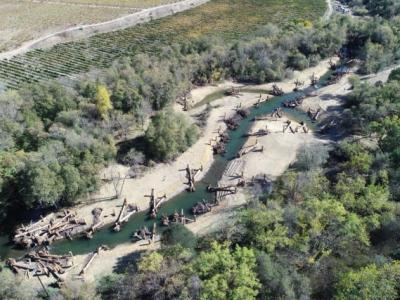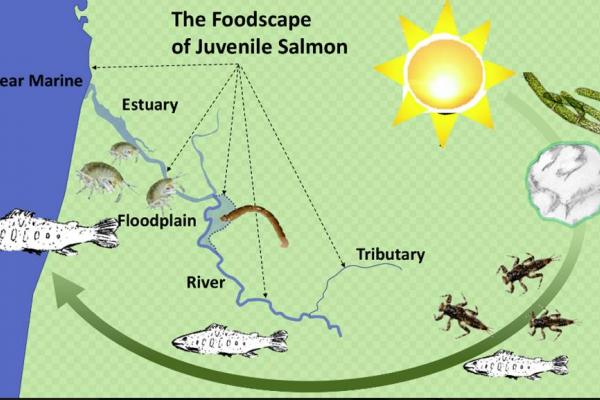Salmonid Foodscapes in River Networks–Synthesizing the Phenology of Habitat Suitability and Food Availability Across a River Network
Session Coordinator:
Gabriel Rossi, UC Berkeley
River networks are shaped by well-described geomorphic and hydrologic dynamics. But for mobile aquatic organisms like juvenile salmon, a river network is also a dynamic foodscape in which seasonal pulses of productivity coincide with hydraulically-mediated habitat connectivity, to present a shifting mosaic of feeding and growth opportunities. The salmonid foodscape describes relationships between (1) the physical suitability of habitat for foraging and (2) food availability in those habitats for foragers, in habitats along a river network. The movement patterns of juvenile salmonids through linked riverine habitats, from headwater streams to mainstem rivers, to floodplains and estuaries may be driven by gradients of access, suitability and productivity within each habitat type. Therefore, to understand how a population of juvenile salmon can grow – it is necessary to consider the spatial distribution and phenology of foraging habitats throughout the whole river network.
This conference session will draw on presenters with unique experience in different aspects of the Foodscape – including primary production and secondary production, instream flow, physical habitat across the riverscape (headwaters to estuary), and salmon life history diversity and behavior. To date, the management of salmon has mostly focused on site-specific physical habitat needs… without linking food availability (drift flux, benthic productivity and terrestrial-aquatic linkages) to physical habitat across the river network. Presentations in this section will collectively sketch out the salmonid foodscape to inform effective management and recovery of salmon and river health.
A Foodscape Model To Approach Salmonid Ecology And Management
Gabe Rossi, University of California, Berkeley
Algae And Cyanobacteria In “Salmonid Foodscapes” Along River Networks
Mary E. Power, University of California, Berkeley
Linking Spatial Patterns Of Stream Metabolism, Ecosystem Processes, And Juvenile Salmonids In A River Network
Matthew Kaylor, Oregon State University
Floodplains In The Foodscape: Physical Process To Productivity
Carson Jeffres, Center For Watershed Sciences, UC Davis
"Counting Calories" Juvenile Steelhead Feeding Ecology In An Intermittently Closed Estuary - Russian River
Erin Seghesio, NOAA Fisheries
Incorporating Foodwebs Into Salmon Habitat Monitoring In The Columbia River Basin
Seth White, Columbia River Inter-Tribal Fish Commission


